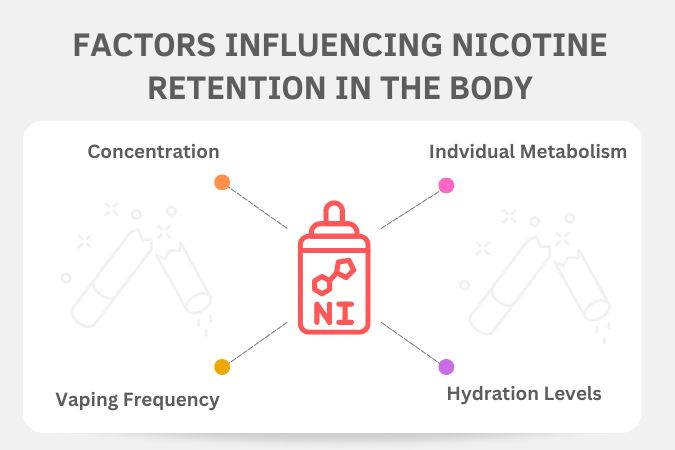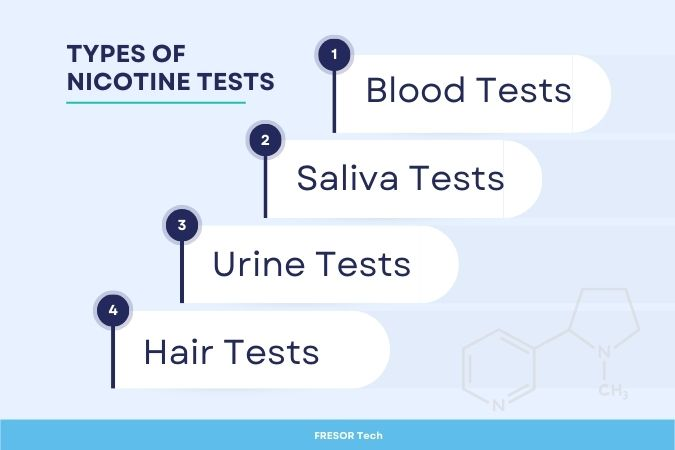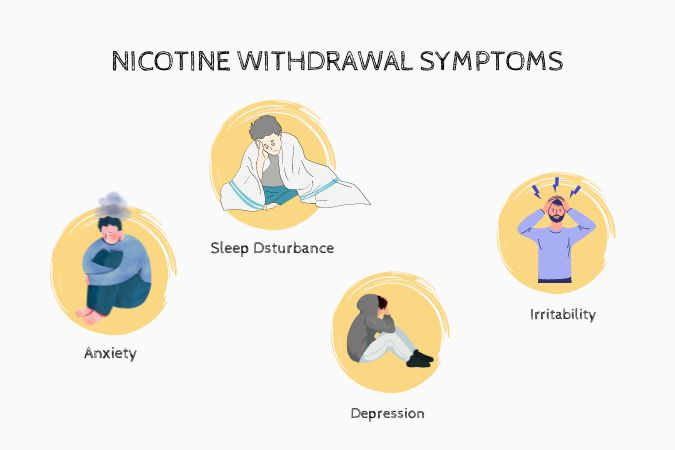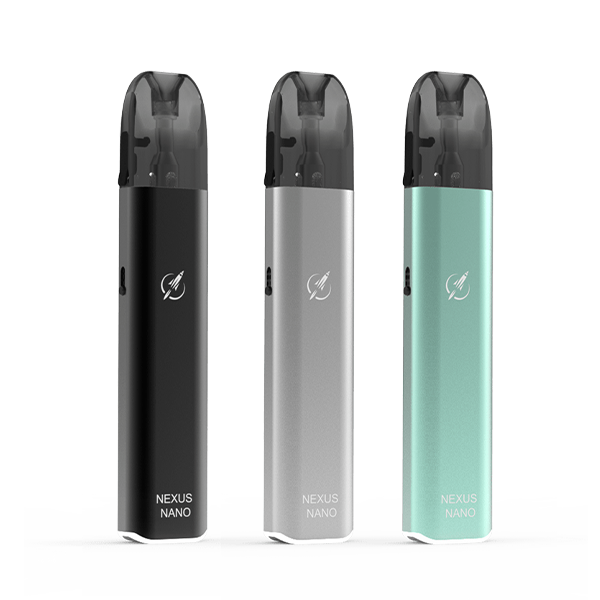How Long Does Vape Nicotine Stay in Your System?
vape Nicotine, the active compound in vaping products, is absorbed into the bloodstream almost immediately after use. Its rapid effects on the body make understanding nicotine retention important—whether for health reasons, preparing for nicotine tests, or planning to quit. The duration nicotine stays in your body depends on multiple factors, such as how often you vape, your personal metabolism, overall health, and lifestyle habits. Having a clear understanding of these influences can support better choices about vaping and quitting.
What Is a Safe Amount of Nicotine?
It’s important to note that there is no established “safe” level of nicotine. Even low doses can be risky for some people, especially those sensitive to nicotine’s effects or with specific health conditions. Higher doses are well-known to increase the risk of addiction and health problems.
Vaping devices deliver nicotine at variable concentrations—some formulas actually contain higher levels than traditional cigarettes, making it easy to consume more than intended. Because of this, monitoring your nicotine intake is essential. Use the lowest dose possible to minimize risks. If you experience adverse effects (such as dizziness, nausea, or rapid heartbeat), cut back or stop use altogether. Ultimately, quitting smoking or vaping entirely is the healthiest option and eliminates all nicotine-related risks.

What Factors Affect How Long Nicotine Stays in the Body?
Nicotine is a highly addictive substance, and the time it remains in your system after vaping is determined by a mix of factors:
1. Frequency of Vaping:
Frequent users accumulate higher nicotine levels in their bodies compared to those who only vape occasionally. The more you use, the more nicotine builds up, which extends how long it lingers in your system.
2. Nicotine Concentration:
Vape juices come in a range of nicotine strengths. Higher concentrations mean higher levels absorbed by your body and longer retention times. Always check the nicotine content before use and, if possible, opt for lower strengths.
3. Individual Metabolism:
Everyone’s body processes substances differently. Some people metabolize (break down) nicotine quickly, flushing it out sooner, while others with slower metabolisms retain nicotine longer. Genetics, age, and activity levels all play a role in metabolic rate.
4. Hydration Levels:
Hydration helps flush toxins—including nicotine—from your system. Drinking plenty of water supports faster elimination of nicotine through urine and sweat. Conversely, dehydration can slow down this natural cleansing process, keeping nicotine in your body longer.

How Long Does Nicotine Stay in Different Parts of the Body?
Nicotine does not linger uniformly across all body systems. Instead, the retention time can vary by organ or tissue:
Bloodstream:
Nicotine is generally detectable in blood for 48 hours up to about 20 days after the last use. After nicotine is metabolized, its byproduct—cotinine—remains in the blood for a few more days and is the main marker used in testing.
Liver:
As the body’s primary detoxification organ, the liver breaks down nicotine and its metabolites rapidly, often eliminating most traces within 48 hours of last use.
Lungs:
Nicotine and its byproducts can stay longer in lung tissue, especially for frequent vapers, as the substance accumulates in the tissue and is slowly released back into circulation. Complete elimination from the lungs may take several weeks.
Fatty Tissues:
Nicotine can also be stored in fat cells, leading to prolonged retention—sometimes up to three weeks before levels drop significantly.
Brain and Nervous System:
Nicotine’s effects in the brain are almost immediate but generally subside within a day. However, due to the slower metabolic processes in the central nervous system, small traces may remain detectable for a longer period.

Types of Nicotine Tests: Blood, Saliva, Urine, and Hair
Nicotine can be detected through several testing methods, each with different accuracy and detection windows:
1. Blood Tests:
Highly accurate and sensitive, blood tests can detect nicotine and cotinine within hours of use. However, they are invasive, require trained professionals, and are typically used in medical settings.
2. Saliva Tests:
Less invasive and easy to administer, saliva tests can identify nicotine and its metabolites for up to four days after last use. While not as precise as blood tests, they are widely used for their convenience and reasonable accuracy.
3. Urine Tests:
The most common screening tool, urine tests are non-invasive and can detect nicotine or cotinine for up to three weeks after vaping. Results may vary based on individual hydration and recent fluid intake.
4. Hair Tests:
Offering the longest detection window, hair follicle analysis can reveal nicotine exposure for up to three months—or even a year—in some cases. While extremely effective for long-term tracking, these tests are less commonly used due to higher costs and specialized equipment needs.
Important Note:
Even passive or secondhand nicotine exposure can lead to a positive test result. Furthermore, nicotine can be passed to infants through breast milk and remain detectable for about two hours after exposure.
How Do Nicotine Tests Work and How Accurate Are They?
Most nicotine tests work by looking for cotinine, the primary metabolite of nicotine. Cotinine remains in the body much longer than nicotine itself, providing a more reliable indication of recent or ongoing nicotine use.
-
Blood Tests: Highly accurate for recent use; best for clinical environments.
-
Saliva Tests: Convenient and fairly accurate for detection up to several days.
-
Urine Tests: Practical, non-invasive, and ideal for detecting use in the past few weeks.
-
Hair Tests: Most accurate for long-term detection, but less practical for most users.
Keep in mind, however, that results can be influenced by factors such as metabolism, hydration status, and even the test method itself.
Vaping and Nicotine Withdrawal
Nicotine addiction leads to physical dependence. When a person abruptly stops or drastically reduces their intake, withdrawal symptoms can arise as the body and brain adjust to the absence of nicotine.
Common Withdrawal Symptoms Include:
-
Strong cravings to vape or smoke, often triggered by certain routines, situations, or stress
-
Irritability, frustration, or anger
-
Anxiety or nervousness
-
Sleep disturbances or insomnia
-
Changes in appetite, often with increased hunger or weight gain
-
Depression or a general feeling of sadness, sometimes accompanied by fatigue
Duration of Symptoms:
Withdrawal symptoms usually start a few hours after your last vape. They tend to peak within the first few days, and the most intense symptoms typically fade after one to three weeks. However, mental and emotional symptoms—like mood swings or cravings—may persist for several weeks or months. It’s important to remember these are temporary and gradually diminish over time.
Tips for Clearing Nicotine from Your System
Quitting nicotine—especially after long-term use—can be a major challenge. But with determination and practical strategies, it’s absolutely possible.
1. Join a Smoking Cessation Program:
Support groups and professional cessation programs provide personalized quitting plans, counseling, medication options, and peer support. Studies show that people are more likely to successfully quit with structured help than by going it alone.
2. Consider Nicotine-Free Vaping:
Switching to zero-nicotine e-liquids allows users to mimic the physical act of vaping without reinforcing nicotine addiction. While not foolproof, many people have transitioned from cigarettes to vaping—and then on to nicotine-free options—as a step-down approach.
3. Stay Busy and Distracted:
Keep your mind and hands occupied to minimize cravings. Try new hobbies, exercise, spend time with friends, or immerse yourself in projects you enjoy.
4. Avoid Nicotine Overdose:
Be cautious with nicotine replacement therapies—using too many at once or consuming high doses can lead to nicotine overdose, causing symptoms like dizziness, nausea, headaches, and vomiting. Always follow medical guidelines and talk to a healthcare professional about your quitting plan.
Final Thoughts
Nicotine from vaping remains in your system for varying periods—typically up to three weeks for urine tests, and much longer (up to three months or more) for hair tests. Several factors, such as how often you vape, your body’s metabolism, and the type of test, influence how long nicotine is detectable. Withdrawal symptoms are part of the process but are temporary and can be managed with the right strategies and support.
Remember, making the decision to quit is the most important step toward better health. With determination, education, and support, you can clear nicotine from your system and move toward a nicotine-free life.















